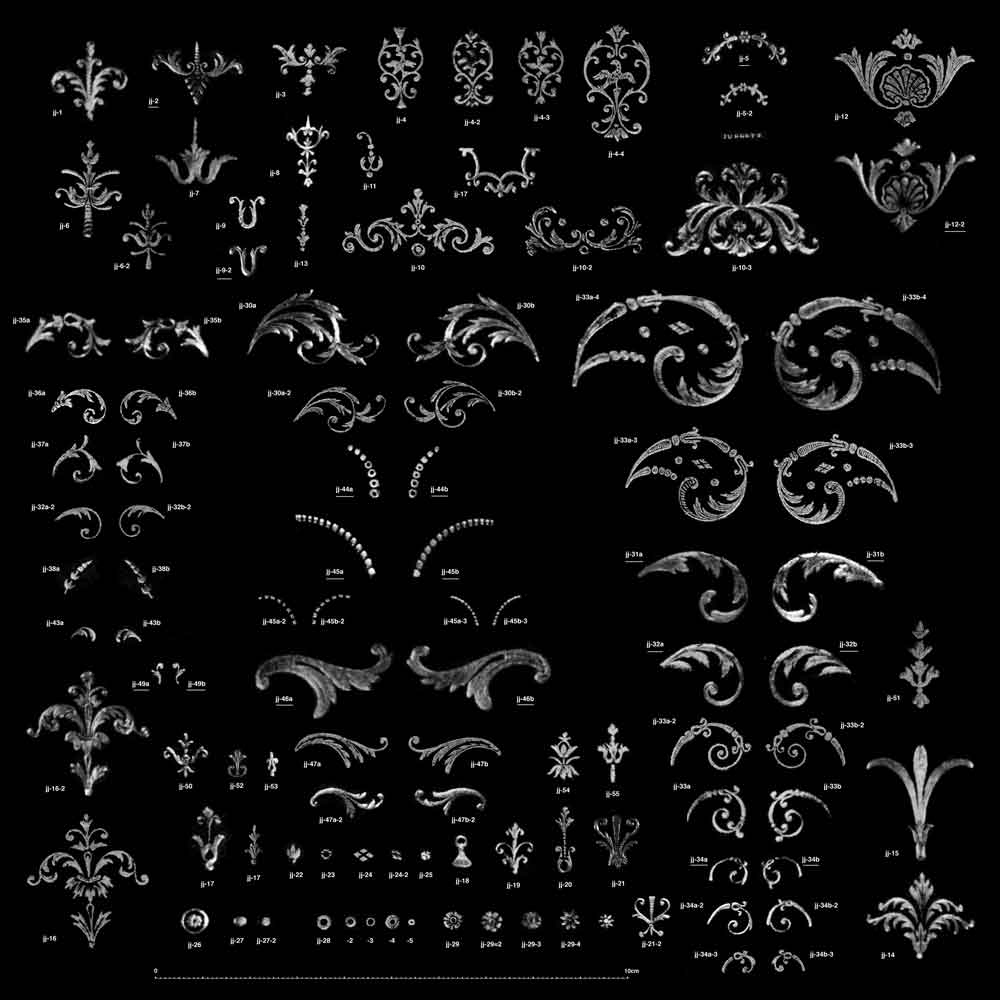

|
I have collected the imprints from a wide number of different reproductions and the quality of the image varies. I have arranged the catalogue to imitate the Dubuisson and Derome catalogues, following the same numbering for similar or identical imprints. At the same time I have been correcting and adding imprints to the Dubuisson and Derome catalogues The imprint numbers that are underlined are imprints that appear identical to Derome imprints and these will have the same number (but a different prefix) in a Derome or Dubuisson catalogue. One of the best imprints for decerning between a Dubuisson and a Derome binding is the imprint pd-12, Jubert has two examples of this imprint one is easy to recognize as his, the other jj-12-2, is identical to Derome's tool dj-12, |
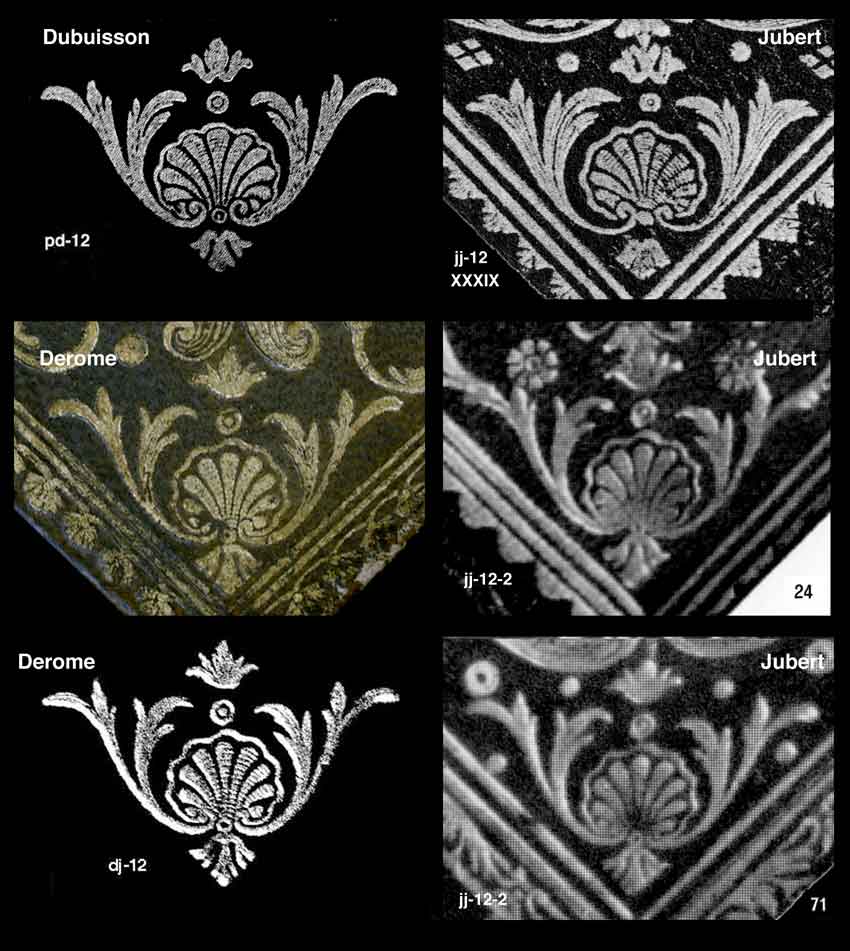
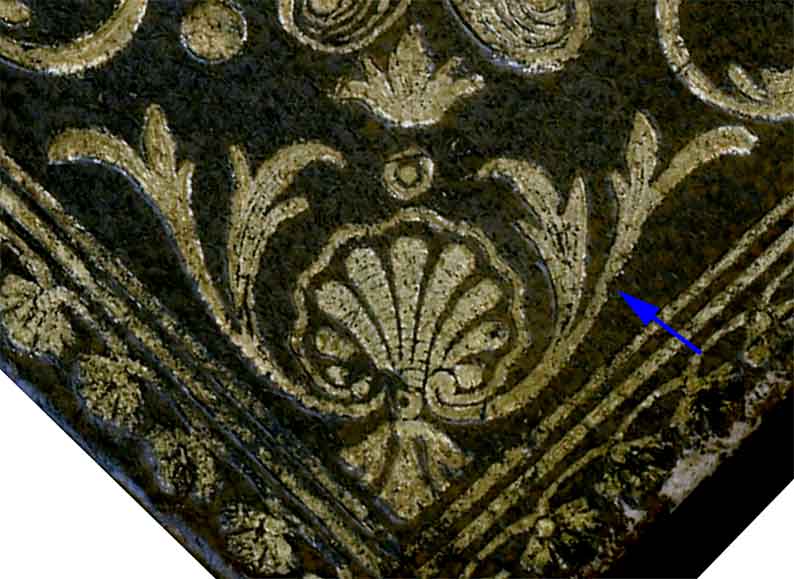
| In Comparative Diagram 1, we can see that The Dubuisson imprint has been closely copied by Derome, and that Jubert has also copied the Dubuisson model but the differences are easy to recognize. We find also two bindings by Jubert (#71 and #24) where he has used Derome's tool. The imprint shown in color is an actual scan of this imprint. Magnification reveals an identifying flaw in this imprint which I have indicated with a blue arrow. Even though I only have low resolution prints of the Jubert examples we can still (just barely) make out this flaw. This along with other, less obvious details, confirms the use by Jubert of the Derome dj-12 tool. Probably this single imprint is one of the best and most often encountered imprints over a broad range of Dubuisson, Derome, Jubert bindings. Almost always used in the corners of the larger sized bindings. A keen student of French 18th century decorative bookbindings will learn to recognize the various species of this imprint, once mastered he will be able to quickly sort out bindings and binders where others have failed. In the case of Jubert however we need to look to other tools to confirm our prognostication. |
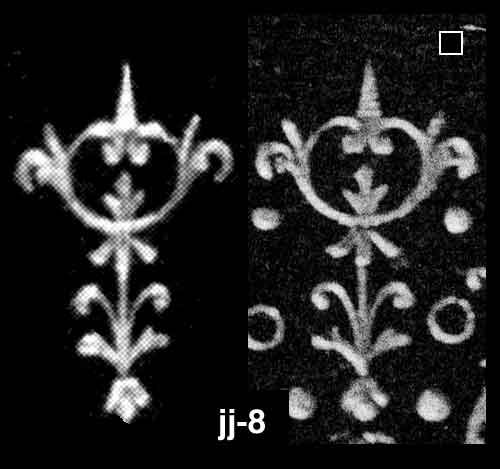
| The imprint shown in Comparative Diagram 2, is a very often encountered in Jubert's dentelles, this is the first imprint that I look for in trying to spot a Jubert, but is not found on all of his bindings. |
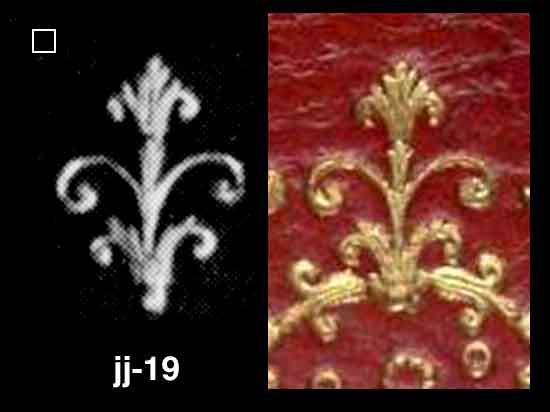
| The imprint shown in Comparative Diagram 3, is a another important Jubert item and can be seen in use from the early to late bindings (see the 1793 example) |

| While some of the Jubert imprints are easy to recognize, others such as the example shown in Comparative Diagram 4 are very hard to identify. This appears to be a close imitation of the Derome example, only slightly smaller and better formed. Looking at these imprints enlarged and placed together, we can say yes, they are different, otherwise even an expert eye would not be able to say if it was or was not a Derome tool. . |

| If you need a really good backup way of recognizing the difference between a Dubuisson and a Derome it is this imprint, while the tools look very similar Derome extended the middle spine to a sharp lengthened point that is in many cases easy to see. However the Jubert imprint appears very close and it is only due to having a high resolution scan of the Derome example that I was able to be reasonably certain that Jubert was in fact using the Derome tool. . |
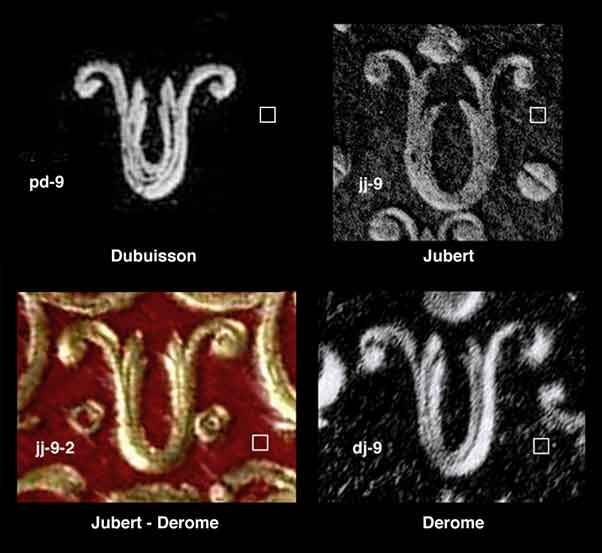
| The Dubuisson pd-9 imprint was closely copied by Derome, and employed in exactly the same fashion. Jubert's use of Derome's tool dj-9 is limited to only a few bindings and it is not prominent in these, i.e. not a crowning piece. Jubert has his own example of this tool which is more closed, and seems often placed in a corner arrangement. In a small 1793 binding, it has been given the ultimate honour of occupying the very corners themselves. . |
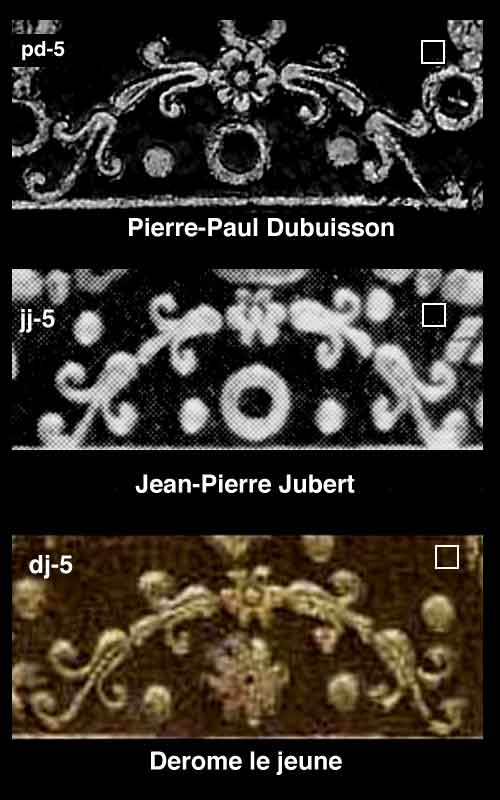
|
It is a lucky thing that the flower in the center of the Dubuisson imprint pd-5, has seven petals. Normally this detail is so small that you can hardly make it out even with magnification, however it is probably the only way to tell the difference between a pd-5 and a dj-5. The derome example has only 6 petals and as far as I can tell the imprints of Jubert are all from Derome's tool. and this is a tool that Jubert used often. It is hard to imagine how both Derome and Jubert made so much use of this tool without being in the same workshop. The chronology of the Derome and Jubert bindings may, clear this up... i.e. Derome never used this tool after 1773 because he loaned it to Jubert who never gave it back! This gives us a good start to recognizing Jubert bindings, I propose now that we look at a few important examples, but before we do I would just like to point out, on the next page, something that caught my eye an Alde auction catalogue, a leather bag, decorated by Jubert. . |
| information about the author | visit cyclopaedia.org |